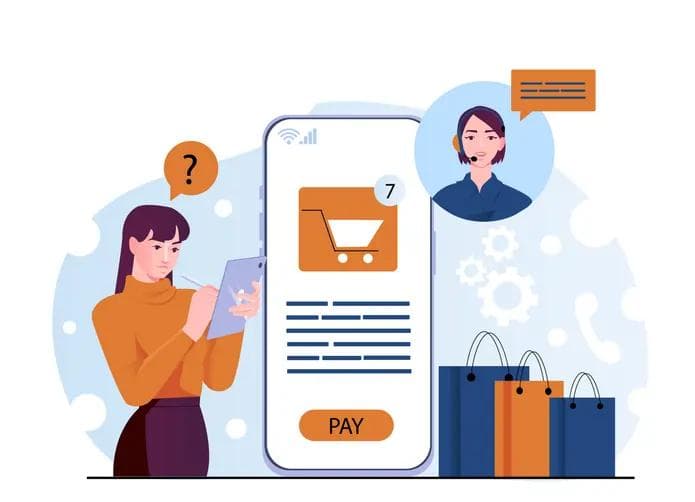E-commerce trends for 2021: is omnichannel 2.0 the way forward?
E-commerce trends for 2021: is omnichannel 2.0 the way forward?
Published by linker 5
Posted on January 4, 2021

Published by linker 5
Posted on January 4, 2021

Why Amazon and marketplaces are critical for retailers to succeed in a post-covid world
By Andrew Banks, CEO, Venture Forge
The landscape of retail has been shifting for some time and increasing amounts of consumers are opting for the ease and reliability of online shopping.
In 2020, this prevalence for a digital shopping experience has been accelerated by up to three years due to the Covid-19 pandemic. Since March 2020, the number of shoppers choosing to buy online has rapidly increased and is now at levels that were only expected to happen by 2024. This is due in part to the national (and international) restrictions and the simple fact that you can’t shop on the high street when the high street is closed, but more importantly due to a fundamental shift in consumer behaviour created by the pandemic.
Not only have shoppers turned to digital marketplaces in their times of need, but retailers who were previously lacking an online presence jumped to make the switch to save their livelihoods as the pandemic reared its ugly head. In a world where many retailers were already struggling to keep pace with the digitisation of retail, this poses a big threat to their business – and a big opportunity for those who embrace this change.
But what lies ahead? With ongoing uncertainty, increasing restrictions and downwards high street retail forecasts, the need to rapidly adopt an online strategy to offset these changes and face into the new and uncertain world in which we now operate is paramount as we head into 2021.
Emergence of omnichannel 2.0
While the classic omnichannel approach, i.e. selling on many of your own sales channels such as owned apps and websites, has been a staple for many retailers over the years, the big step change in 2021 will be a major shift to selling on, and embracing, third party marketplaces such as Amazon, eBay, Etsy, Fruugo, and Zalando.
With the decline, and in some cases, closure of physical stores and shopping locations, retailers, manufacturers and brands need to become more digitally focused. It will become more common for brands to sell in channels owned by others, as well as channels owned by themselves.
Developing a sound omnichannel strategy and having a reliable, unified presence across a number of owned and third-party platforms will provide your consumers with a trusted retail experience as well as the option to interact with your brand however they choose, in a way that feels comfortable and is convenient for them.
Third-party marketplaces – the obvious opportunity?
As a global marketplace agency, we are already starting to see our clients wanting to be present across as many sales channels as possible, including trusted marketplace platforms. Smaller businesses may not have the tools or know-how to sell direct to consumer, but with trusted platforms like Amazon, brands can easily become established and visible.
Of course, selling on Amazon and third-party marketplaces is nothing new, but retailers and brands have been, at times, slow to adopt them. This has often been for a fear of losing their own sales to a third party, or a concern about working with them because of a lack of knowledge or capability within their teams.

Andrew Banks
While these are reasonable concerns, they can be easily resolved with development of a robust strategy or working with a trusted specialist. And the consumer (quite frankly) couldn’t care less as they are already shopping on these channels in serious volume for every possible product you could imagine.
In 2019 over $1.9 trillion was spent on global marketplaces – very few of those customers cared whether they were buying from a brand, a retailer or a marketplace. They chose to buy from the outlet that had the right product, the right price, the right delivery proposition and the customer’s trust.
Going forwards, we need to see more brands, retailers and manufacturers collaborating to improve the results for all parties and move away from traditional supplier/buyer relationships which can hinder these.
Amazon – a successful model
Nowhere has this year’s growth in online sales been more prevalent than with Amazon, which saw its market dominance go from strength to strength, despite the challenging climate. The retail giant recently announced a 40% year on year sales growth and doubling of its profits.
It can be easy to scorn Amazon’s growth and dominance; after all, it went into the pandemic armed with an established, loyal customer base, a product range of almost everything under the sun, as well as its highly popular Amazon Prime option allowing most of its customers to benefit from free next day home delivery.
What most people, however, don’t realise is that, due to Amazon’s unique business model, over half of the products sold on Amazon are sold by independent businesses and brands, not direct from Amazon. This means that the vast majority of this impressive sales growth was felt by small and independent Amazon sellers.
With a ready-made customer base, latent demand for almost every product in the market, tools and technologies to help you sell, and a logistics infrastructure already in place and one that is scalable, Amazon and other marketplaces must be an integral part of any retailer’s strategy.
At Venture Forge, we have onboarded four times the number of brands onto Amazon in the last three months than we have in the whole of last year, and we can only see this increasing as we head into 2021. Any retailer or brand facing declining sales in their biggest channel has to start taking marketplaces seriously.
Explore more articles in the Business category











